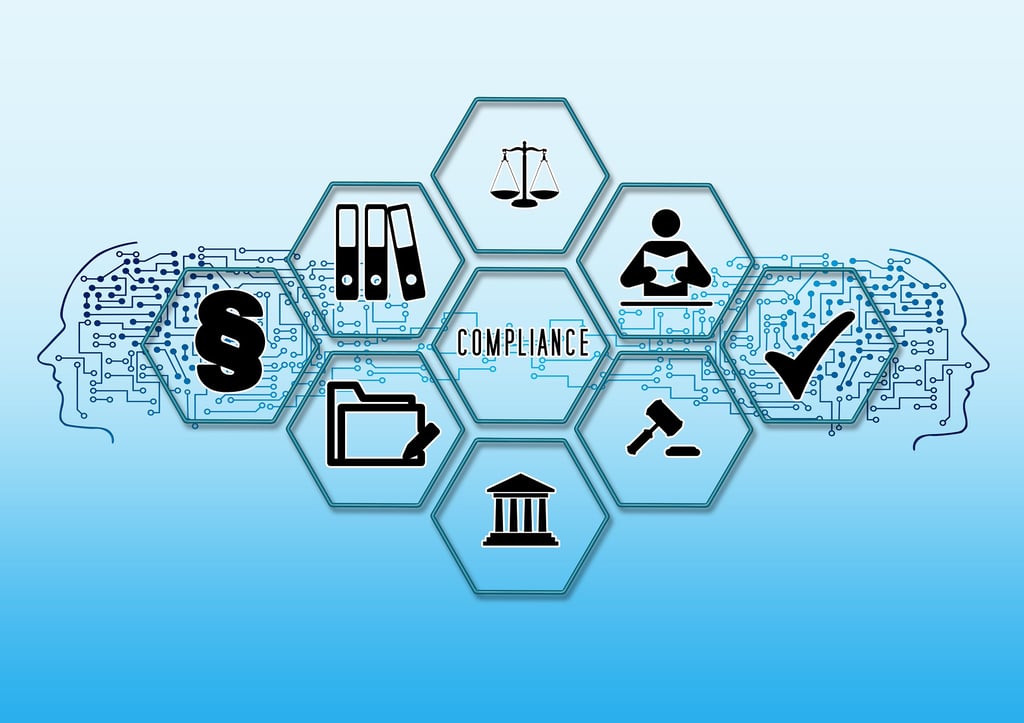

Five Tips for Managing Compliance on Enterprise Networks | ENP
No matter the industry, its goals, and its customer base, most modern enterprises manage large amounts of consumer data in their network applications and tools. Detailed customer data makes it possible for enterprises to fine-tune their business model to customer wants and needs, but there’s a potential consequence to this level of access: enterprises may […]


No matter the industry, its goals, and its customer base, most modern enterprises manage large amounts of consumer data in their network applications and tools. Detailed customer data makes it possible for enterprises to fine-tune their business model to customer wants and needs, but there’s a potential consequence to this level of access: enterprises may intentionally or unintentionally violate personal data compliance regulations and as a result, their customers’ trust.
In order to protect your customers’ privacy and your employees’ reputation with customers, it’s important to learn about the data regulations that affect your industry and how you can comply with them. Read on to learn more about different data regulations that focus on consumer data, and more importantly, how you can develop network best practices for managing a wide range of compliance requirements.
Also Read: Top Risk Management Tools for Enterprise 2021
Data compliance on enterprise networks focuses on following established federal and/or global regulations relating to customer data management. Compliance regulations most commonly apply to consumer privacy, protection, and their right to choose how their data is used by enterprises. However, compliance regulations can also require non-consumer data sharing best practices from corporations.
Although it’s important for enterprise leaders to do further research based on the regions and industries they cover, the following four data regulations commonly impact security and data needs for enterprises:
GDPR is an EU data regulation that protects the privacy of consumer data in the European Union and the European Economic Area. Regardless of where your business is located, GDPR applies to you if you work with EU-based customer data.
HIPAA is a United States federal regulation, passed in 1996, that regulates how patient data can be used by covered entities and business associates who work with personally identifiable information (PII) and protected health information (PHI).
GLBA, also known as the Financial Services Modernization Act of 1999, is a United States federal law that details how banking, insurance, securities, and investment companies are allowed to provide services to and subsequently manage the personal data of their clients.
SOX is a United States federal law that mandates certain financial record keeping and reporting, making corporate data transparent and accurate for key stakeholders.
The majority of data regulations are enforced by federal and global committees that conduct regular enterprise audits to check for compliance. Before an official audit by these regulatory committees reaches your organization, commit your team to regular internal audits to check for potential problems. These internal audits should include a variety of quality assurance checks, including network security analyses and user, device, software, and database inventories.
Getting Started with Network Audits: Creating a Network Audit Checklist
Most data regulations require not only technical safeguards, but also physical safeguards that limit who can access customer data and when, how, and why they’re accessing it. A zero trust security model helps enterprises to comply with access control requirements because the “trust no one and verify everything” approach establishes minimum trust with only a few necessary users.
If you choose to get started with a zero trust model, the first and most crucial step is to get buy-in from employees. Start by establishing the policy, training all users, and requiring them to sign off on the policy agreement. Next, you should set up appropriate security measures, including network microsegmentation and network monitoring. Take a look at this list of other key steps to building a zero trust network that aligns with compliance requirements and company goals.
Top Zero Trust Software and Services: Top Zero Trust Networking Solutions for 2021
Every data regulation exists to protect the customers’ data, but they’re all different and do not apply to every global region, industry, and use case. As an enterprise that works with consumer data, it is your responsibility to research and know what regulations apply to you.
All major data regulatory bodies provide online compliance resources and specific information about how you can and cannot use consumer data. Regardless of the regulation, it’s important for you to know and respect the rights and preferences of your customers as it relates to their personal data in order to maintain strong customer relationships.
You can’t protect user data effectively unless you appropriately secure and manage data storage locations. Check out these top resources for protecting consumer data in databases, data lakes, data warehouses, and other locations across an enterprise network:
Most data laws and regulations include pages of legal language that are best interpreted by experts. To make sure you don’t miss any key points of a regulation that could land your organization with financial or legal problems, take the following steps:
Whether your enterprise chooses to outsource compliance management or handle it internally, extensive and ongoing research should be the top priority in order to keep up with data laws and how their interpretations change over time. Ignorance does not protect businesses from hefty fines and other non-compliance consequences. Regardless of which data laws apply to you, maintaining security and user best practices protects the company against a multitude of legal, financial, and reputational threats.


Shelby Hiter is a writer with more than five years of experience in writing and editing, focusing on healthcare, technology, data, enterprise IT, and technology marketing. She currently writes for four different digital publications in the technology industry: Datamation, Enterprise Networking Planet, CIO Insight, and Webopedia. When she’s not writing, Shelby loves finding group trivia events with friends, cross stitching decorations for her home, reading too many novels, and turning her puppy into a social media influencer.

Enterprise Networking Planet aims to educate and assist IT administrators in building strong network infrastructures for their enterprise companies. Enterprise Networking Planet contributors write about relevant and useful topics on the cutting edge of enterprise networking based on years of personal experience in the field.
Property of TechnologyAdvice. © 2025 TechnologyAdvice. All Rights Reserved
Advertiser Disclosure: Some of the products that appear on this site are from companies from which TechnologyAdvice receives compensation. This compensation may impact how and where products appear on this site including, for example, the order in which they appear. TechnologyAdvice does not include all companies or all types of products available in the marketplace.